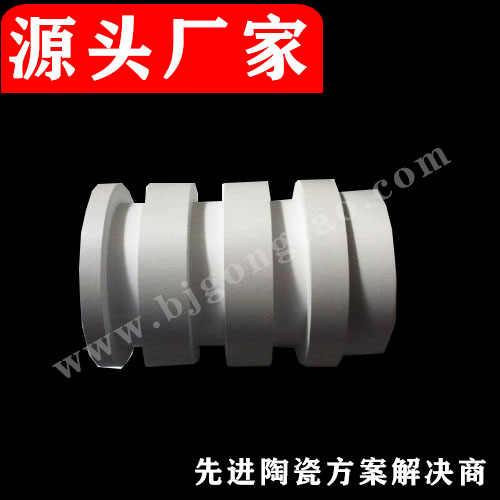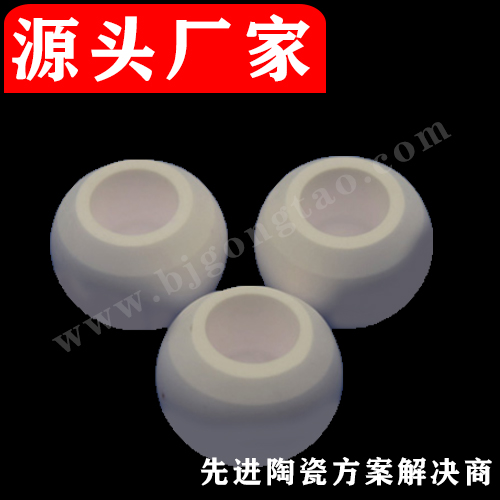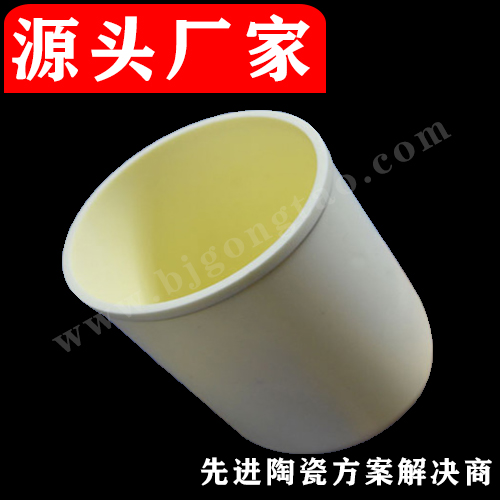
Suzhou Kaifa New Material Technology Co., Ltd.
Email:heqing@szkfxc.com
Email:sales@szbknm.com
Email:bkxc.bonnie@gmail.com
Porous ceramic applications
Abstract Porous ceramics are widely used in environmental protection, food processing, biomedicine, chemical industry and other fields due to their excellent chemical and mechanical properties. The author briefly introduces the advantages and disadvantages of various preparation methods of porous ceramics, and analyzes the factors that affect the porosity, strength and thermal shock resistance of porous ceramics. Generally speaking, the increase in pore size and porosity will reduce the bending strength and compressive strength of porous ceramics, while the moderate porosity can ensure the ceramic material has better thermal shock resistance.
Porous ceramic is a new type of ceramic with a certain size and a certain number of pores inside. These pores communicate with or close to each other. It has the characteristics of anti-corrosion, high temperature resistance and oxidation resistance of traditional ceramic materials. It also has the characteristics of low density, high open porosity and large specific surface area. Therefore, porous ceramics are widely used in catalyst carriers, fluid filtration, separation and purification, sound absorption and sound insulation, fuel cells, sensors and biomaterials. Silicate, aluminosilicate, diatomaceous earth, corundum and corundum, cordierite, aluminum titanate, etc. are the main materials for preparing porous ceramics. At present, the main preparation processes of porous ceramics include: organic foam impregnation process, foaming process, adding pore-forming agent process, extrusion forming process, etc. The organic impregnation process can prepare porous ceramics with high porosity, but the ceramic skeleton is fragile and has many defects; the porous ceramics prepared by the foaming process have the characteristics of high porosity and high strength. The preparation of closed pore porous ceramics has advantages, but it has The requirements are high; the process of adding pore-forming agent can be applied in porous ceramics with complex shapes, but the pore size is difficult to control, and it is not suitable for preparing porous ceramics with high porosity. The extrusion process is used to manufacture slender porous ceramics. The size and shape of the pores can be precisely controlled, but this method is not suitable for the preparation of porous ceramics with complex pore diameters.
The mechanical and chemical properties of porous ceramics are subject to factors such as porosity, strength, and high-temperature stability. The above factors also determine the application fields of porous ceramics.
1 Performance of porous ceramics
In recent years, researchers have continuously optimized the performance of porous ceramics and made great progress. The porosity is the apparent porosity, which refers to the volume of the open pores as a percentage of the total volume. Compressive strength and bending strength are important indicators to characterize the mechanical properties of porous ceramic materials. The compressive strength is the maximum value of the sample against the vertical pressure under the action of the lower plate of the testing machine. The bending strength is the maximum load-bearing capacity of the specimen under the action of the testing machine.
1.1
Porosity The determination of the porosity and density of porous ceramics usually uses the Archimedes drainage method. The porosity test process is shown in Figure 1, and the porosity calculation formula is as shown in formula (1):

Figure 1 Porosity test process
The average size of the stomata aperture is obtained after statistical processing according to the scanning electron microscope image. Porosity and pore size are closely related to the raw materials and preparation process of porous ceramics. By changing the content of dextrin pore-forming agent and sintering atmosphere, Sun Ying et al. obtained porous SiC ceramics with a porosity of 27% to 70%, and an average pore diameter of 0.11 to 0.16 μm. No need to add pore-forming agent, two different sizes of 6H-SiC powder, SiC porous ceramic prepared by solid-state sintering method, the porosity varies in the range of 36% to 39%. If B₄C is added to the ceramic ingredients, the pore size can be increased from 11.8μm to 20.9μm. The SiC porous ceramic prepared by the organic foam impregnation method has a porosity of up to 85%, and its pore size depends on the specifications of the selected foam. The CaSiO 3 porous ceramic was prepared by solid-phase reaction method, and activated carbon was introduced as a pore-forming agent. When the activated carbon in the ceramic batch increases from 0 to 4wt%, the porosity and pore size both increase continuously. When the activated carbon content further increased, the pore size continued to increase, but the porosity did not change significantly. It can be seen that the diversification of porous ceramic preparation technology can adjust the porosity and pore size by changing the mass ratio of each component of ceramic ingredients, the size of additives, forming technology and sintering technology. In specific application fields, the preparation scheme with simple process and low cost should be selected as much as possible. However, the porosity is not the only index to characterize the performance of porous ceramics. In order to improve the mechanical properties of β-CaSiO₃ ceramics, Pan et al. introduced Si₃₃₄ as a sintering aid, resulting in a decrease in porosity. Therefore, a porous ceramic with excellent performance needs to have a good pore structure and high mechanical strength, and the two are related to each other. We will introduce it below.


Han et al. used a new type of foaming-injection molding combined with microwave-assisted catalytic nitridation to prepare Si₃N₄/SiC porous ceramic samples. The bending strength is 5.28MPa and the compressive strength is 12.86MPa. The Si₃N₄ porous ceramics prepared by the same method have a bending strength and compressive strength of 8.1MPa and 20.8MPa, respectively. YbF₃ and CaF₃ are used as sintering aids. The porous Si₃N₄ porous ceramic prepared by pressureless sintering method has a bending strength of up to 232.1MPa. It can be seen that the different raw materials and preparation processes of porous ceramics lead to huge differences in bending strength and compressive strength. A large number of studies have shown that the strength of porous ceramic materials is mainly affected by the porosity. The increase of pore size and the increase of porosity will reduce the compressive strength and bending strength of the material.
Obviously, the higher the porosity, the lower the bending strength. Using Si₃N₄ porous ceramics synthesized by self-propagating high temperature, when the porosity is reduced from 47% to 40%, the bending strength is increased from 118MPa to 216MPa. However, increasing the content of Y₂O₃ can change the structural parameter b and offset the effect of porosity on the bending strength.
1.2 Thermal shock resistant
porous ceramic is an excellent filter material for removing dust and sulfide in high temperature gas. However, changes in temperature will cause the porous ceramic to break when it rapidly cools down or heats up. Therefore, thermal shock resistance is an important performance index of porous ceramic materials.
There are two experimental methods for the study of thermal shock resistance: one is water quenching and the other is air cooling. The experimental process is shown in Figure 3.

Figure 3 Experimental process of thermal shock resistance
During thermal shock, thermal stress caused by temperature changes causes cracks on the surface of the specimen, and the cracks will cause the residual strength to decrease. In general, the residual strength will decrease as the thermal shock temperature difference increases. Therefore, preventing crack generation and crack propagation is an effective method to improve the thermal shock resistance of porous ceramics.
Studies have shown that porosity, thermal conductivity, bending strength, and relative density all have an impact on thermal shock resistance. When crack extension encounters pores, obvious deviations and bifurcations occur, which means that the path that the crack goes through becomes longer and the fracture work consumed increases. In contrast, ceramics with higher porosity help to improve the thermal shock resistance of ceramics. But it is not that the higher the porosity, the better. On the one hand, the increased porosity will reduce the room temperature bending strength; on the other hand, the increased porosity will reduce the thermal conductivity of the porous ceramic, and the thermal shock resistance will also decrease. Therefore, moderate porosity can ensure good thermal shock resistance of the material. The thermal shock resistance of porous ceramics can also be improved by increasing the strength and increasing the toughness, such as coating process and adding reinforcement. Adding silicon carbide nanopowder to alumina-mullite porous ceramic can improve its thermal shock resistance. In order to prevent porous silicon nitride ceramics from absorbing water vapor, Wang et al. prepared SiC NWs/α -Si₃N₄ coating on the surface of the sample. The enhanced toughening mechanism of SiC NWs not only improves the mechanical properties of the coating, but also in thermal shock experiments, The coating can repair cracks and enhance the thermal shock resistance of porous ceramics.
2 Application of porous ceramics
2.1 Carriers of catalysts
Pore ceramics have excellent pore structure and large number, and large specific surface area. As a catalyst carrier, it can increase the contact area between catalyst and reactants, and improve catalytic efficiency and speed. The characteristics of strong adsorption capacity and good thermal stability can extend the service life of the catalyst and reduce the cost of use. Therefore, porous ceramics are ideal materials for catalyst carriers and are widely used in automobile exhaust purification and inorganic and organic production fields. As China‘s gas emission standards become more stringent and the rapid development of biology, medicine and other fields, the application fields of porous ceramics as catalyst carriers will also be more extensive.
2.2 Filtration, separation and purification
As a new material for filtration, separation and purification, porous ceramics have the characteristics of long service life, strong anti-microbial ability, corrosion resistance, high temperature resistance and reusability. In the field with strict requirements, porous ceramics have been widely used, such as filtering milk, liquid-solid separation, molten metal removal of impurities, industrial wastewater purification, etc.
2.3 Sound-absorbing materials
During the propagation of sound waves, porous ceramics act as sound barriers, which can change the direction of sound waves and limit the sound waves to the cavity. The sound waves in the cavity cause the vibration of the air and work to overcome the friction of the air into heat energy, which greatly reduces the energy of the sound. Compared with porous ceramics, inorganic fibers have poor mechanical properties, are susceptible to moisture, and are not environmentally friendly; foam glass and metal sound-absorbing materials are more expensive than porous ceramics. The average sound absorption coefficient of porous ceramics pressed by He Ruifei and other blast furnace iron quenching slag materials is as high as 0.70 or more, and has a good sound absorption effect. It can be seen that in the field of sound absorption, porous ceramics have a place.
2.4 Thermal Insulation Materials
Traditional ceramic materials have low thermal conductivity and can be used as thermal insulation materials. The gas filled in the porous structure of the porous ceramic further enhances the thermal insulation performance of the porous ceramic. At present, porous ceramics have been widely used as heat insulation materials in traditional gas furnaces and high-temperature electric furnaces at 1600°C. In the Shenzhou series spacecraft and the Long March series rockets, multilayer insulation materials composed of porous ceramics and metal heat insulation materials have been widely used. Good application; the thermal insulation shell of the space shuttle is composed of a porous ceramic that is evacuated. Vacuum porous ceramic is currently the best thermal insulation material in the world.
2.5 Fuel cell materials
Porous ceramics can be used as cathode materials in fuel cells to provide a transport channel and activation site for oxygen to improve reaction efficiency. At the same time, porous ceramics can work stably under the high temperature of the fuel cell, and provide a channel for heat loss. The advantages of the above-mentioned porous ceramics improve the performance of the fuel cell and extend its life, so that the application of porous ceramics in the fuel cell will become a research hotspot.
2.6 Biomaterials
Porous bioceramics have the advantages of good biocompatibility, good binding with bone tissue, and no rejection reaction. They have been well recovered in the medical fields such as postoperative cavity recovery, improved angiogenesis, and bone repair. Applications. In addition, the porous structure of porous ceramics is convenient for loading drugs, and its durability can play a supporting role for a long time. Therefore, porous ceramics have great research value in the field of medical biology.
3 Conclusion
Lower cost and better performance are the pursuit of human industry. With the continuous improvement and development of porous ceramic technology, 3D printing this new technology of porous ceramics has a very broad market prospect in the medical field; the promotion of computer simulation technology, the porous ceramic microstructure and its corresponding macroscopic mechanical properties Research has a huge role in promoting. At present, porous ceramics have been widely used in industrial and civil fields. I believe that in the near future, porous ceramics with better performance will play a greater role in other professional fields.
Source of information:
This information originates from the Internet for academic exchange only. If infringement please contact us to delete immediately






